TLDR Masculinizing hormone therapy increases the risk of hair loss in transgender and gender-diverse patients.
In a retrospective cohort study of 988 transgender and gender-diverse patients undergoing masculinizing hormone therapy (MHT) at Fenway Health, the incidence of androgenetic alopecia (AGA) increased from 0.4% before MHT to 3.1% after MHT initiation. The median duration before AGA diagnosis was 2.8 years, with the highest incidence in the fourth year of MHT. The study found that 71% of AGA patients were prescribed finasteride, while 9.7% received topical minoxidil. The study's findings were consistent with previous research indicating delayed AGA development in transgender patients on MHT, though the proportion affected was lower, possibly due to reliance on ICD-10 diagnoses and the young age of participants. Limitations included a short median follow-up duration of 3.4 years and a predominantly White cohort, which may not represent diverse populations. Treatment success could not be assessed due to insufficient follow-up data.
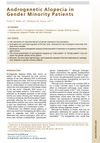 8 citations
,
November 2019 in “Dermatologic Clinics”
8 citations
,
November 2019 in “Dermatologic Clinics” AGA treatments like minoxidil and LLLLT are safe and effective for gender minority patients.
 162 citations
,
April 2016 in “The Lancet Diabetes & Endocrinology”
162 citations
,
April 2016 in “The Lancet Diabetes & Endocrinology” Testosterone therapy in transgender men has both desired effects like increased muscle mass and potential health risks such as higher cardiovascular risk.
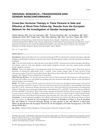 204 citations
,
May 2014 in “The Journal of Sexual Medicine”
204 citations
,
May 2014 in “The Journal of Sexual Medicine” Hormone therapy for trans individuals is effective and generally safe in the short term.
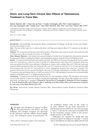 110 citations
,
October 2013 in “The Journal of Sexual Medicine”
110 citations
,
October 2013 in “The Journal of Sexual Medicine” Testosterone treatment in trans men increases body and facial hair and may lead to hair loss over time, but severe skin issues are rare.
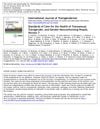 2295 citations
,
August 2012 in “The international journal of transgenderism/International journal of transgenderism”
2295 citations
,
August 2012 in “The international journal of transgenderism/International journal of transgenderism” The guidelines recommend informed consent for gender-affirming treatments and stress the importance of personalized, culturally sensitive care for transgender individuals.
3 citations
,
February 2021 in “JAMA Dermatology” Masculinizing hormone therapy increases the risk of hair loss in transgender and gender-diverse patients.
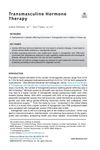 6 citations
,
April 2019 in “Endocrinology and Metabolism Clinics of North America”
6 citations
,
April 2019 in “Endocrinology and Metabolism Clinics of North America” Testosterone therapy for transmasculine individuals is generally safe with medical supervision, improves mental health, and has mixed effects on physical health.
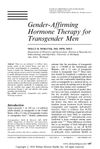 28 citations
,
October 2018 in “Clinical Obstetrics and Gynecology”
28 citations
,
October 2018 in “Clinical Obstetrics and Gynecology” Testosterone therapy seems safe and effective for transgender men with proper care, but more long-term research is needed.
 66 citations
,
October 2013 in “Current Opinion in Endocrinology, Diabetes and Obesity”
66 citations
,
October 2013 in “Current Opinion in Endocrinology, Diabetes and Obesity” The conclusion is that published guidelines are improving transgender medical care, but more research and education in transgender medicine are needed.







